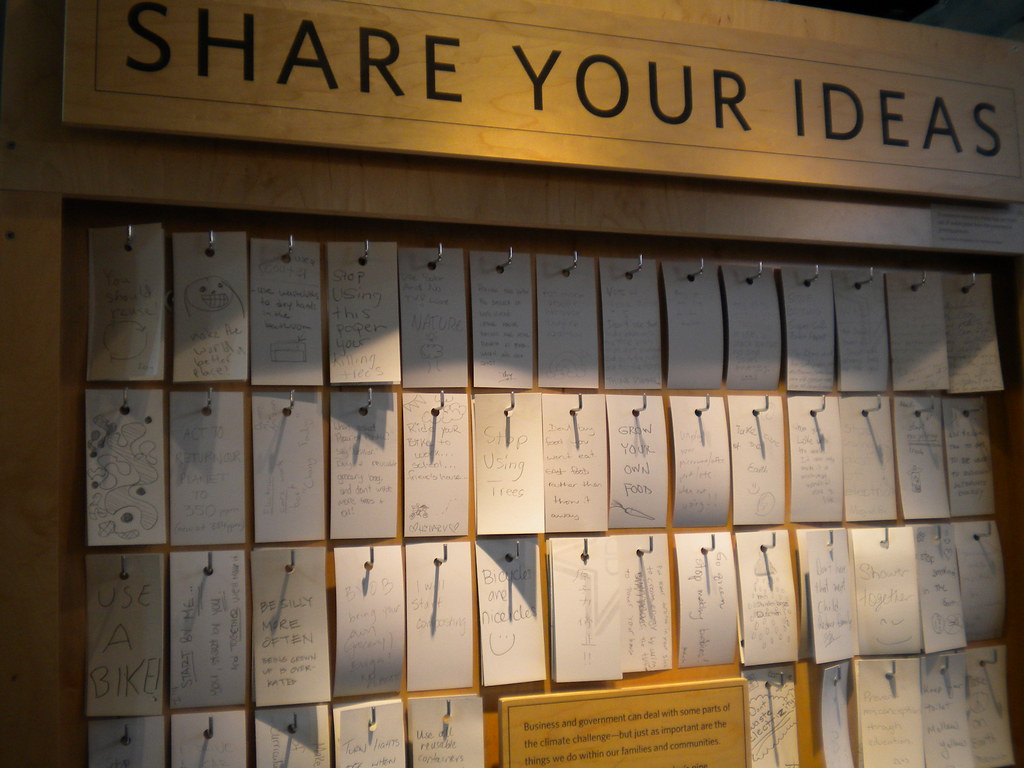I'm probably supposed to be impartial, but I have to admit Thing 4 is my favourite Thing!
Otherwise known as Twitter, this microblogging service allows you to publish short updates of up to 140 characters (this is because Twitter was designed to work with mobile phone text messages, which have a character limit). Users follow other users to subscribe to each other's updates. All the updates from the users you follow will be aggregated in to one timeline that appears when you log in to the site.
Twitter has been in the news a lot over the last couple of years, what with super-injunction breaking and celebrity endorsments from the likes of Stephen Fry. Although a common belief is that Twitter is filled with people tweeting about what they had for lunch, in reality few users actually use the service to send updates about the minutiae of their everyday activities, instead preferring to use it to network and share ideas or interesting things they have seen around the web. Because of this, Twitter can be of use to librarians on (at least) two levels - for personal networking, and as an institution interacting with users.
Twitter for libraries
Firstly, here are a few examples of libraries using Twitter:
The UL,
The Jerwood Library (Trinity Hall),
the Judge Business School information and library services,
New York Public Library, and
Orkney Library. I've picked out these five as they give a range of both style and purpose. The Judge Business School aggregates business news for its students - their Twitter feed serves as an information service. Orkney Library on the other hand mixes library news with all kinds of other things, almost all of it hilarious. Building up a relationship with their patrons (and the rest of the interwebs) like this has worked very well for them, as is evidenced by their massive list of followers. I suspect in most Cambridge libraries however, the staff don't have quite so much leeway for irreverence as this!

Other services a library Twitter feed can provide include linking to eresources, plugging the library's blog, and reminding followers of end of term due dates etc. It is obviously important to remember that a lot of students will not have Twitter, so this should be enhancing other communications rather than replacing them. However it is very easy to embed a widget into your library website that displays recent tweets (just follow the simple steps
here), and the libraries@cambridge team have aggregated all tweets by Cambridge University libraries into a widget on their
libraries gateway.
Twitter for networking
While we were talking about library twitter accounts in the section above (where the account is one of the public faces of the library), the majority of accounts on Twitter are not institutions but individuals. Tweeting as an individual you will again have to decide on the level of personal vs professionalism you want to have for your "Twitter style", and there is no one right answer to this. As a networking tool, Twitter really comes into its own, as its real-time feed allows conversations to be held, thoughts on conferences to be aggregated as they are taking place using hashtags (more on this later), and questions to be asked and answered.
Once you have been tweeting for a while and have built up a few followers, Twitter can be really handy for asking questions. To help me with this blog post I asked my followers who their top 3 Twitter accounts were for LIS news and information. (I also asked them to "retweet" this message - commonly abbreviated as "RT" - so that it reached more people.)
Here is the crowdsourced list. Take a look at this list for starters, then why not explore a bit further yourself! If you find someone interesting, take a look at who they follow and go from there. But follow as many or as few people as you personally can manage - current awareness is good but information overload is bad!
Being able to view all updates using a particular hashtag has made Twitter a valuable tool for following conferences. For example, if you wished you'd had the chance to go to CILIP's New Professionals Conference, here are all the tweets from conference-goers:
#npc11. Another use for the hashtag is for holding real-time Twitter chats on a particular topic. A great example of this is
#libchat, the brainchild of
@NatalieBinder which is held every Wednesday at 8-9.30pm EST.
How to get started
- Go to www.twitter.com and click the yellow "sign up" button and follow the steps to create an account.
- Once you have created your account you will be taken to your Twitter homepage where you can update your profile to include a short biography, a link to your blog and a profile picture. We recommend that you leave the Twitter Privacy box unchecked because this means other Cam23 2.0 participants can read your tweets. You can always change this at any time.
- Now post your first update. Click in the status box at the top of the screen where you see the question "What's happening?" Write a comment, maybe something about your participation in the 23 Things programme. You are restricted to 140 characters, and as you type you will see the number at the top right of the box decrease. Leave enough characters to add #cam23 at the end. This is known as a hashtag and allows Twitter users to group tweets by subject. By adding #cam23 to your tweet your comment will be picked up by other participants. Once you click "Update", this tweet will be added to your timeline, and anyone who follows you will be able to see your tweet.
- Search for @cam23things (or click here) and click "follow". Now our tweets will appear in your timeline!





